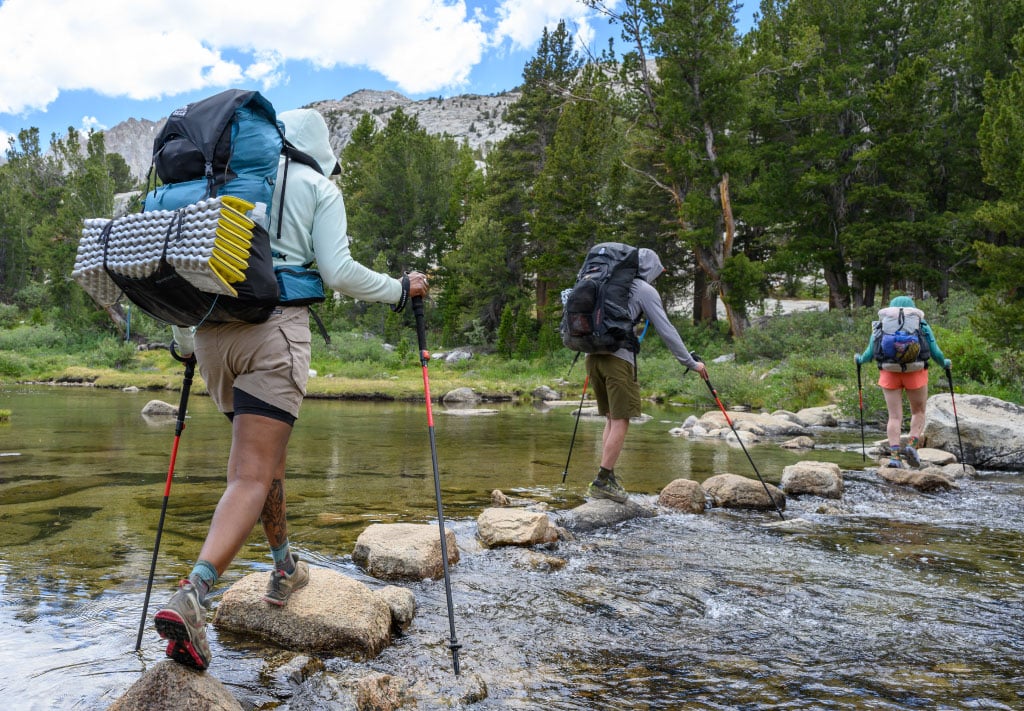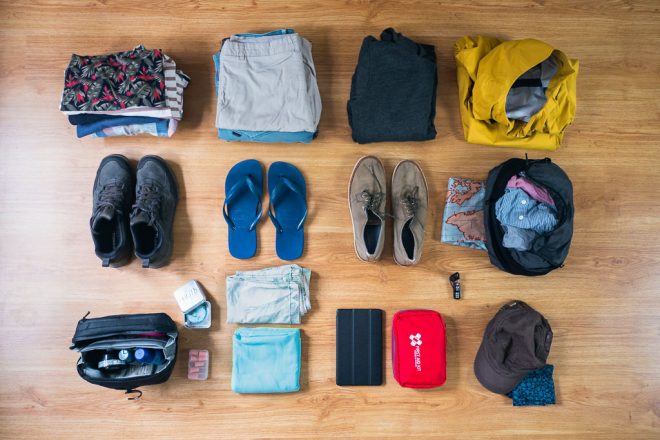For Packing a Backpack for Hiking efficiently, distribute weight evenly and prioritize essentials. Start with your shelter and sleeping system at the bottom, followed by heavy gear.
Embarking on a hiking adventure requires meticulous preparation, with packing your backpack being a cornerstone of the planning process. A well-packed backpack can mean the difference between an enjoyable trek and a cumbersome journey. It’s critical to consider the order of items, the accessibility of gear, and the optimization of space.
An improperly packed backpack can lead to discomfort or even injury, so understanding the balance and distribution of weight is paramount for hikers. Whether you’re preparing for a short day hike or a multi-day excursion, mastering the art of backpack packing is an essential skill that enhances your overall experience on the trail. Remember, every item should have its rightful place, ensuring you remain agile and comfortable throughout your adventure.

Credit: www.msrgear.com
Essentials First: Packing a Backpack for Hiking
Embarking on a hike requires careful preparation. Packing your backpack is not just about fitting everything in. Focus on essentials that ensure a safe and enjoyable journey.
Prioritizing Gear: What Makes The Cut
Choosing the right gear is crucial. It determines your backpack’s weight and comfort. Start with the must-have items for safety and navigation. Here’s a guide to help prioritize:
- Navigation tools: Compass and maps always top the list.
- First-Aid Kit: Be prepared for any minor injuries.
- Water and Filtration: Hydration is non-negotiable. Pack a water filter or purification tablets too.
- Food: Energy-rich, lightweight snacks like nuts and bars.
- Shelter: A compact, lightweight tent or emergency bivouac.
- Insulation: Extra layers to combat the cold.
Weather Wise: Adapting To Climate Conditions
Anticipate the weather conditions and adjust your gear accordingly. A waterproof jacket is necessary for rain, while extra sun protection is critical for hot weather. Consider these items:
| Weather Type | Essential Gear |
|---|---|
| Cold Weather | Insulated jacket, thermal hat, gloves |
| Wet Weather | Waterproof clothing, quick-drying fabrics |
| Sunny Climates | Sunscreen, hat with a brim, sunglasses |
Remember to layer your clothing for easy adjustment throughout your hike.

Credit: www.indietraveller.co
Balancing Act: Weight Distribution Techniques
Packing a backpack for a hike is more than just fitting everything inside. It’s about balance and weight distribution. Properly packing leads to comfort and efficiency on the trails. Let’s learn how to load your gear correctly to help maintain your posture and stamina.
Highs And Lows: Positioning Heavy And Light Items
Mastering the art of positioning items in a backpack changes the game. Place heavier items close to your spine and high within the pack. They should sit between your shoulder blades for optimum balance.
Light items, conversely, belong toward the bottom and front. This placement reduces strain on your body by keeping the center of gravity stable. Check out this table for a clear visual:
| Position | Item Weight | Examples |
|---|---|---|
| Top & Middle | Heavy | Water reservoir, Food stash, Stove |
| Bottom | Light | Sleeping bag, Extra clothes |
Pack Stability: Keeping Things Secure Mid-stride
A stable pack means a happy hiker. Compressing and securing straps is essential. This stops items from shifting while moving. The trick is to tighten side straps and secure gear with internal straps if available. Use these tips:
- Utilize built-in compression straps to minimize load movement.
- Fill gaps with small items to prevent shifting.
- Tighten all straps once everything is packed.
Ensure nothing dangles on the outside of your pack. Loose items can throw off your balance. Strapped gear should sit snugly against the pack. Mind these details for a more stable and enjoyable hike.
Space Savers: Maximizing Backpack Real Estate
Understanding how to make the most of your backpack’s space transforms hiking. It involves careful planning and smart packing. With the right techniques, even a small backpack can hold all your essentials.
Compression Tactics: Reducing Bulk
Pack like a pro by utilizing compression tactics to reduce bulk. This means clothing, sleeping bags, and other soft materials should occupy less room.
- Use compression sacks: Place items inside and squeeze out the air. This compacts the items drastically.
- Roll your clothes: Rolling clothing minimizes dead space. It avoids air pockets too.
- Exploit empty spaces: Utilize space inside shoes and cookware. They can hold small items.
Multi-use Items: Packing Less By Packing Smart
Opt for items that serve multiple purposes. This slashes the number of items in your pack. You carry less and do more.
| Item | Uses |
|---|---|
| Bandana | Head covering, pot holder, washcloth |
| Spork | Spoon and fork duo, tent stake alternative |
| Duct Tape | Repair gear, first aid, makeshift label |
Consider a multi-tool over individual tools. A single item accomplishes various tasks.
Accessibility On The Trail: Organizing For Convenience
Packing your backpack for a hike isn’t just about fitting everything in. You must think about what you need and when you’ll need it. Accessibility is king on the trail; your gear must be arranged for quick retrieval to keep your hike enjoyable and hassle-free. The right pack organization can save time, prevent frustration, and even keep you safe in emergencies. Let’s delve into how to organize your backpack for maximum convenience on your next outdoor adventure.
Grab-on-the-go: Arranging Immediate Needs
Think about the items you’ll reach for most often, like water, snacks, sunscreen, or a map.
These essentials should be at your fingertips:
- Hydration: Water bottles or hydration packs should sit in side pockets or hydration sleeves.
- Snacks: Energy bars and trail mix go in hip belt pockets for easy snacking.
- Protection: Keep sunscreen and insect repellent in top compartments or outer pockets.
- Navigation: Store maps and compasses in easy-access pouches.
Compartmentalization: Utilizing Pockets And Loops
Divide and conquer your gear organization by using all compartments in your backpack smartly:
| Main Compartment | Top Lid | Side Pockets | Front Pockets |
|---|---|---|---|
| Bulkier items like a sleeping bag and clothing | Items needed for quick access like a headlamp | Water bottles and trekking poles | Rain gear and first aid kits |
Use internal pockets for small gadgets and valuable items. Attach loops for carabiners and equipment like ice axes or hiking poles. Think layers: the less used an item, the deeper it can be packed.
Care And Maintenance: Prepping Your Pack For The Long Haul
A well-maintained backpack ensures a worry-free hiking experience. It’s crucial to regularly inspect and clean your gear. This attention can prevent mishaps on the trail. Here’s how you can keep your backpack in top-notch condition for years of adventures.
Routine Checks: Ensuring Gear Longevity
Regular inspections are key to backpack longevity. They help spot early signs of wear and tear. Here’s what you should do:
- Check all zippers and buckles for damage.
- Inspect seams and straps for fraying.
- Ensure all compartments and pockets are intact.
- Look out for fabric tears or punctures.
Clean And Mend: Keeping Your Backpack Trip-ready
Cleaning and repairing your pack can extend its life. Follow these simple steps:
- Empty your pack and shake out loose dirt.
- Use a mild soap and warm water to clean the fabric.
- Scrub stubborn stains with a soft brush.
- Air dry the pack away from direct sunlight.
- Sew any small tears to prevent further damage.
- Apply a durable water-repellent (DWR) coating if needed.
Remember, store your pack in a cool, dry place when not in use.
Advanced Packing Techniques
Advanced Packing Techniques for a hike can turn a tough trek into a smooth journey. Knowing how to pack can save time, space, and energy. Let’s explore some pro tips for arranging your backpack effectively.
Layering System: Attire Arrangement
A smart layering system for clothing optimizes comfort and accessibility. Keep these guidelines in mind:
- Start with the base: Pack your moisture-wicking undergarments at the top for easy access.
- Mid-layer magic: Thermal tops and fleece jackets should follow, rolled tightly to save space.
- Weather-proof outerwear: Place waterproof and windproof items at the bottom unless bad weather is imminent.
Fold and roll clothes using the ranger roll technique to compress and avoid creases. Categorize clothing by type in separate compartments or packing cubes for easy retrieval.
Hydration Solutions: Managing Water Supplies
Staying hydrated is vital. Arrange your water supplies with these steps:
| Water Container Type | Location | Tips |
|---|---|---|
| Hydration Bladder | Close to your back | Fill up and slip into the bladder sleeve, route the hose for easy sipping. |
| Water Bottles | Side pockets | Keep them upright and balance the weight evenly between sides. |
| Water Purification | Top pocket | Store purifiers or filters for quick access when refilling in the wild. |
Remember to distribute weight efficiently. Place heavier items close to your back while lighter items go towards the top and outside of your pack. This balance ensures stability and ease of movement on varied terrains.

Credit: off.com
Frequently Asked Questions Of Packing A Backpack For Hiking
How Do You Pack A Hiking Backpack?
Place heavy items near your spine and above the waist for stability. Pack lighter items at the bottom and outside edges. Keep essentials accessible. Balance the load evenly. Compress straps to secure contents and reduce movement.
What Order Should I Pack My Hiking Bag?
Pack your hiking bag by layering items based on weight and need. Place heavy gear close to your back, centering the load. Stow frequently used items on top for easy access. Store sleeping gear at the bottom. Balance weight evenly to enhance stability and comfort on the trail.
What Are The Tips On How To Prepare Your Backpack In Hiking?
Prioritize essentials: pack navigation tools, first aid, shelter, water, and food. Distribute weight evenly for comfort. Use compartmentalization for quick access. Adjust straps for a secure fit. Always weatherproof your gear.
How Do You Pack A Backpack Smartly?
Start by placing lightweight items at the bottom of your backpack. Follow with a heavier gear centered and close to your spine. Distribute frequently used items on top or in accessible pockets. Roll clothing to save space and use compression straps to tighten the load.
Keep the pack balanced.
Conclusion
Packing smart transforms your hiking experience. Remember, balance and accessibility are key in your backpack arrangement. Ready your pack with essentials in mind, and embrace adventure with confidence. Venture out; let nature’s wonders be your reward for thoughtful preparation. Safe travels and happy trails!

